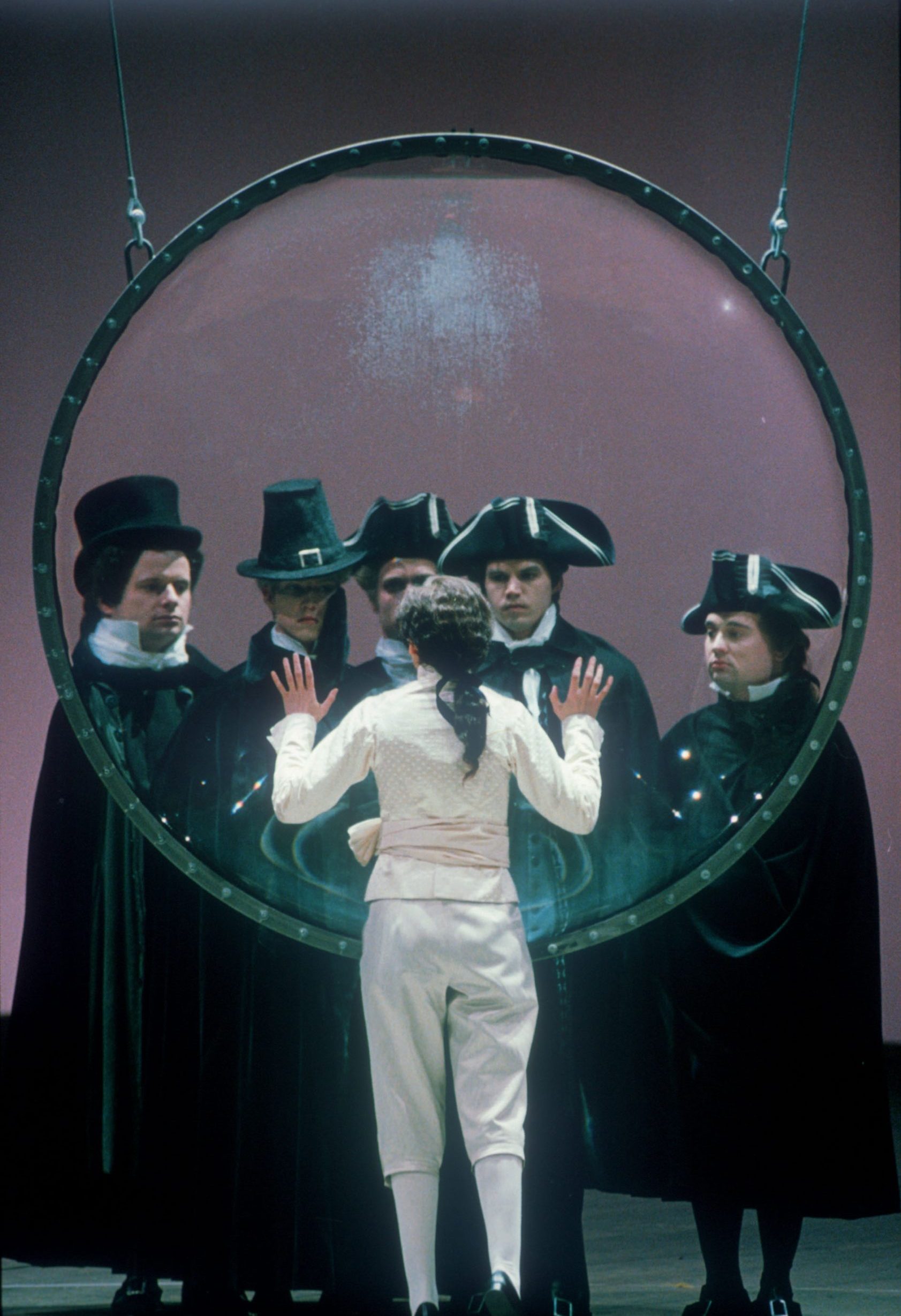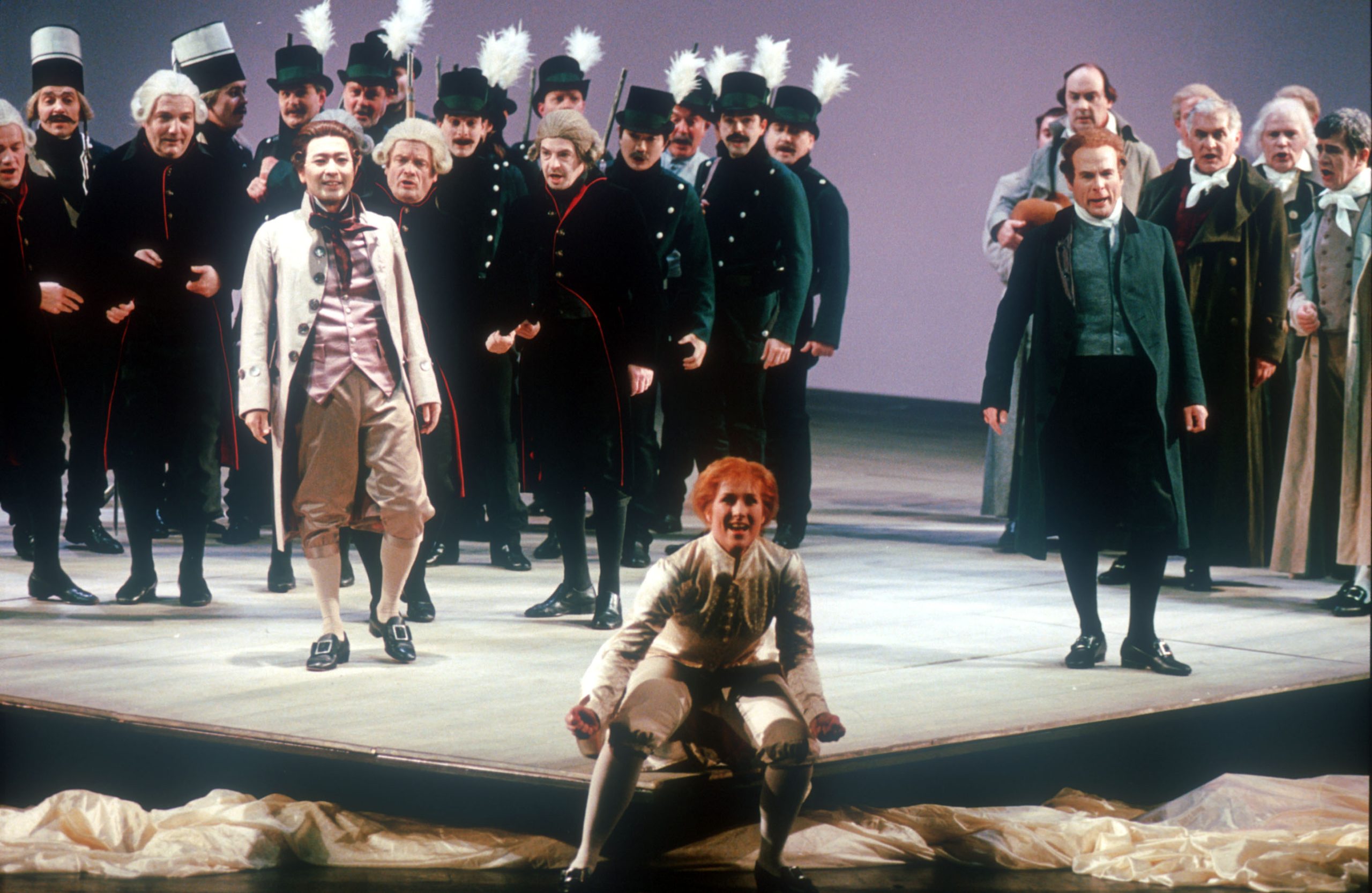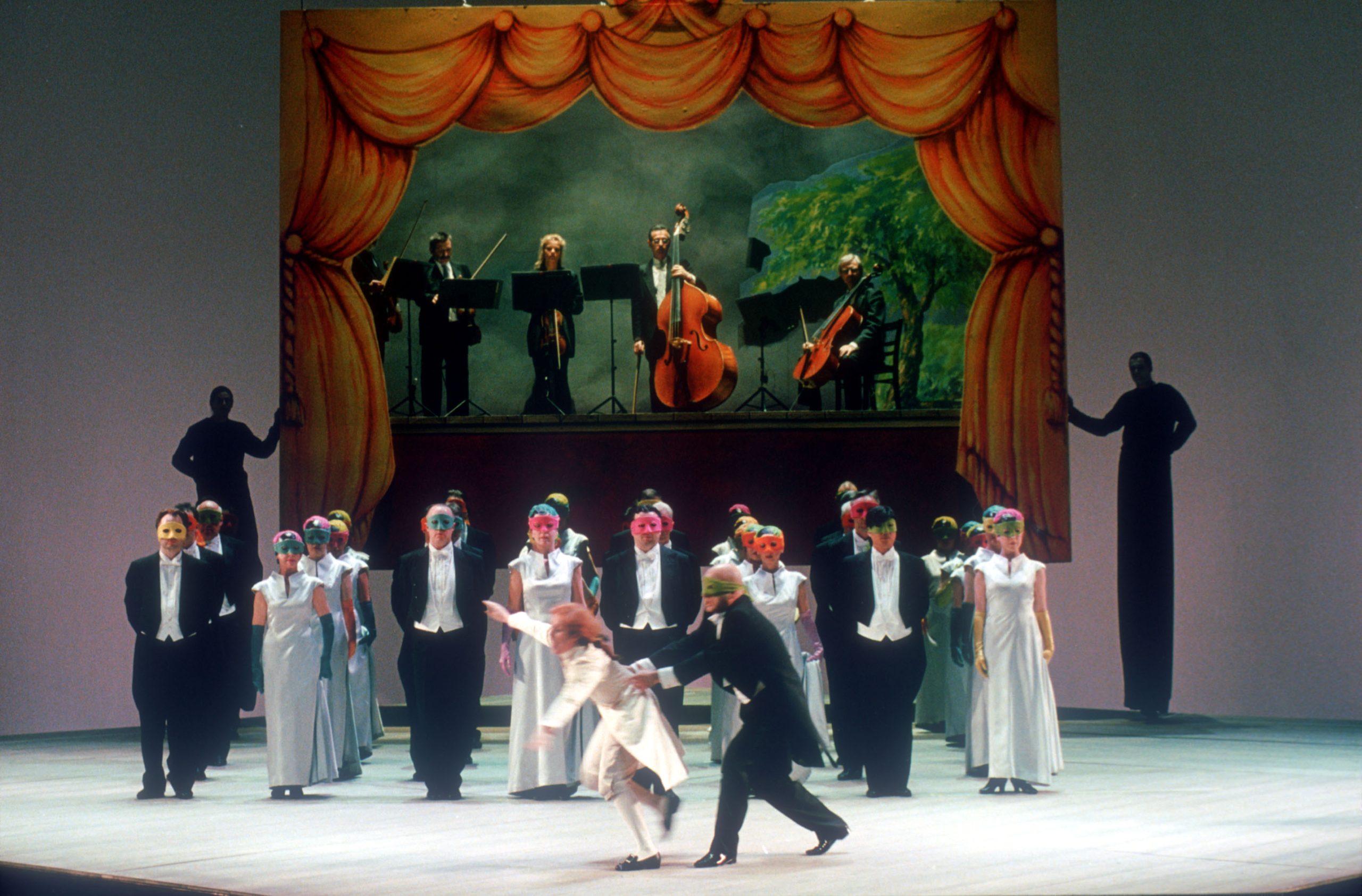Mannheim >Donosti
Un ballo in maschera – Mannheim Nationaltheater
Un ballo in maschera – Giuseppe Verdi
Mannheim Nationaltheater

Opera
Un ballo in maschera
Music: Giuseppe Verdi
Libretto: Antonio Somma
Mannheim Nationaltheater, Germany
Premiere on 2000



Un ballo in maschera
Mannheim Nationaltheater, Germany
August 16, 18 and 20, 2004
Auditorio Kursaal, Quincena Musical de San Sebastián, Donosti
Kursaal Auditorioko. Donostiako Musika Hamabostaldia
Musical Director: Jesús López Cobos
Stage Director: Werner Schroeter
Euskadi Symphony Orchestra
Orfeón Donostiarra
Choir Director: José Antonio Sáinz
Stage production: Dietrich Grosse
Gustav III King of Sweden: Francisco Casanova
Count Renato Anckarstrom: Vassily Gerello
Amelia: Ana Maria Sánchez
Ulrica: Elena Zaremba
Oscar: Ofelia Sala
Press quotes:
Great artistic montage. In the 25 years of the Quincena Musical de San Sebastián, we had not witnessed an opera performed with such roundness, with such high artistic quality. Nino Dentici, El Correo
SAN SEBASTIAN. It has been said that “Un Ballo in Maschera” is a jinxed opera. Even not believing it, before these things you have to keep a prudent distance, just in case. Tempting the fate of the unknown, as well as trying to descend into hell, is a matter that should not be insisted on. In this same opera by Giuseppe Verdi, Gustavo III, King of Sweden, proposes to visit the kingdom of eternal punishment and in response receives a fatal stab from his best friend, Renato, convinced that the glances between the king and his wife, Amelia, do have a certain range. The Donostiarra Musical Fortnight wanted to explain it by taking the title to the Kursaal auditorium with musical direction by Jesús López Cobos and scenic direction by filmmaker Werner Schroeter, based on a production premiered in Mannheim in 2000.
Schroeter starts, as a stage, from a raised rhomboid platform and the addition of some auxiliary element, such as two chairs, three hanging bodies or a huge magnifying glass. All under the guise of minimalism, although deep down the aesthetic principle of “what you see is what you get” is denied. A detail: the appearance of the witch Ulrica suspended in the air like a pantocrator of evil. It is a crucial moment, because before proposing a trip to the abyssal refuge of the magician, Schroeter raises her to heaven as a deity, composing a figure of religious aftertastes and, incidentally, facilitating the projection of the dense, vibrant, serious and understandable voice by Elena Zaremba.
The Russian mezzo-soprano was the first of a well-cared cast with a clearly feminine depth. Along with her were Ofelia Sala, interpreter for an Oscar with lively movement, clean and neat vocal lines, and also Ana María Sánchez, in search of a purity that led to “Morrò, ma prima in grazia” with a warm breath , width and long line.
Taste for the supernatural
There was enough intensity at this point to make it considered impolite for Schroeter to send a child helper across the stage. But it is possible to deduce that the German director finds a taste for the supernatural rather than for the human, so that Amelia and Gustavo sing their moving love duet without hardly meeting a glance. And some stage support would have been needed. Because Francisco Casanova, the Dominican tenor in charge of embodying the King, proved to have among his best weapons the color of the voice, the beauty of the singing and the length of the phrasing rather than the forcefulness in the bass, the finesse in the middle voice or the theatrical passion. Contrary to his opponent Vassily Gerello, who outlined Renato with more scenic residue; he arrived at the crucial “Eri tu” with momentum, offsetting the tempered biting of the voice or the gravity that is supposed and desired in the character.
López Cobos proposed an effective interpretation. He was forceful at the beginning of the second and third acts, to later relax the tension in one and try to strengthen the other. With López Cobos, one senses a certainty that an orchestra like the Euskadi Symphony Orchestra must be grateful for, capable of offering an equality, adjustment and concentration that represent an advance with respect to other previous performances in the Fortnight. And even the Orfeón Donostiarra, with its peculiar vocal clarity, some flattening in intention and stage rigidity, leaving for the end a precious pianissimo somewhat out of context. By then the real masquerade ball, place of the regicide, is a naive scene, musically smooth and emotionally prudent. Attractive enough for many viewers to hear praise for this production, which has been one of the singular bets of a Musical Fortnight that is already heading towards its end, on September 6, free of any possible hint of misfortune. ABC
